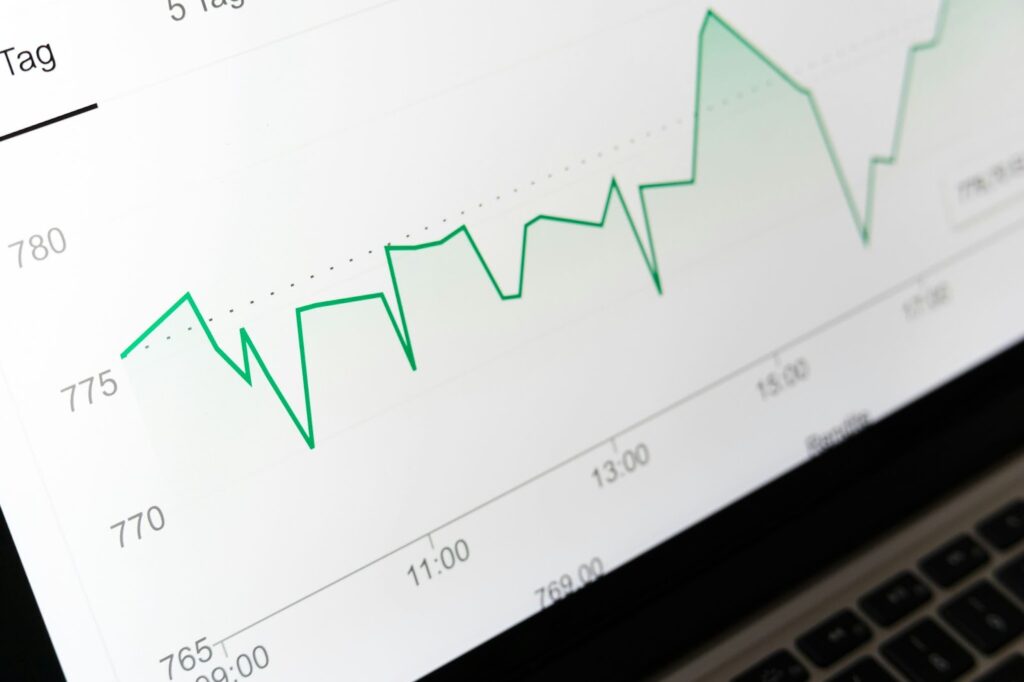When evaluating and improving a sales team’s effectiveness, you need data – and you need to incentivize it. Data analysis using sales performance analytics helps businesses align their incentives with the overarching company goals. This means that sales teams’ efforts contribute directly to the organization’s success.
This is a win-win for everyone: sales teams are motivated and productive, working together to reach the wider company objectives. However, the challenge lies in turning this data into actions. Let’s explore how sales performance analytics can be used for individual, team, and organizational success.
Streamline commissions for your RevOps, Finance, and Sales teams
Design, track, and manage variable incentives with QuotaPath. Give your RevOps, finance, and sales teams transparency into sales compensation.
Talk to SalesWhat Is Sales Performance Analytics?
First, let’s define sales performance analytics.
Sales performance analytics is the process of using data insights and analysis to assess the performance of sales teams (and individuals within those teams) with a view to improving their effectiveness.
For sales performance analysis, you’ll need to examine the following key metrics, among others:
- Conversion rates: The percentage of leads that resulted in a closed sale.
- Revenue generated: The total income generated during the period.
- Customer acquisition costs (CAC): The total cost incurred to acquire a new customer (e.g., marketing costs, sales costs, and other expenses).
- Average deal size: The average value of each sales deal.
- Sales cycle length: The average time a sales prospect takes to move through the sales funnel.
By analyzing these metrics, business leaders can identify individual and team strengths and areas for improvement. They can then use this knowledge to create a sales incentive program.

What Are The Benefits of Sales Performance Analytics?
Next, let’s look at the benefits of sales performance analysis.
Informed Decision-Making
With sales performance analytics, decisions are based on data, which means you’re not just going on a hunch. The choices businesses make are more accurate and effective, and initiatives are more likely to succeed. For instance, if data shows that specific sales tactics lead to higher conversion rates, managers can concentrate on these strategies and confidently allocate resources.
Enhanced objectivity
Sales performance analytics provides a clear, non-biased view of how individuals and teams compare. This makes for a fair environment because performance is measured consistently against the same metrics. By evaluating performance objectively, top performers are easier to identify – and it’s also easy to understand what factors have contributed to their success so they can be replicated across the team.
Identification of Skills Gaps and Areas for Development
Performance data analysis means organizations can pinpoint specific skills gaps that can then be targeted by training. If, for example, data shows that a team isn’t great at closing deals, leaders can set up specific training to improve this area. This means that training resources are used effectively and where they’re most needed.
In addition, performance metrics also show where individuals or teams can improve. For example, if a team is struggling at a specific point in the sales funnel, training can be targeted to address it.
Better Motivation for High Performers
Employees who perform well receive recognition, which is highly motivating. When sales representatives are acknowledged for their efforts with rewards and recognition, it boosts morale and encourages them (and their peers) to keep doing the same.
Improved Resource Allocation
Sales performance analytics allows resources to be allocated optimally. Leaders can find out which team members (and strategies) yield the best results. With this knowledge, businesses can focus on these areas and avoid wasting resources on underperforming strategies.
Strategic Planning
Sales performance insights help business leaders understand trends and spot patterns in sales data. This means they can plan their strategies to adjust to potential market changes. Being proactive like this means they stay ahead of the competition and can better capitalize on emerging opportunities.

The Connection Between Sales Incentives and Wider Company Goals
Organizations should align their sales incentives with the broader company objectives to create a cohesive business strategy. When these are closely tied, it means that sales teams’ efforts directly contribute to the business’s strategic objectives. As such, everyone is working towards common goals in a unified direction.
Motivation and Direction
Aligning sales incentives means that sales teams are motivated to achieve goals directly contributing to the organization’s success. This alignment shows there is a clear sense of purpose and direction. For example, if the company wants to increase market share in a specific region, aligning sales incentives to this will motivate the team to prioritize this area.
A More Collaborative Approach
When everyone is working towards the same goals, there are also plenty of opportunities for departmental collaboration. These integrated efforts mean better cohesion and more cooperation in the organization.
Marketing, sales, and customer service teams can work together to achieve their shared goals, improving productivity and higher sales volumes. In smaller businesses, seeking support from professional marketing agencies may be beneficial. Although these companies will have different goals, they should still work towards yours.
Resource Optimization
When sales incentives align with company goals, resources and decisions are focused on the right things. Ultimately, this alignment is better for long-term growth and profitability. For example, if increasing the sales of a high-margin product is a company goal, aligning sales incentives with this will drive efforts toward promoting and selling that product.
Integrating advanced payroll solutions ensures these incentives are executed smoothly, aligning payouts with actual sales achievements and maintaining morale among sales teams.
Long-term Growth and Profitability
Business growth is more sustainable when sales strategies and efforts align with company objectives. Sales teams build stronger customer relationships, and customers are more satisfied. This increases customer retention and contributes to the company’s long-term success and profitability.

Best Practices: How to Use Sales Performance Analytics to Align Sales Incentives with Company Goals
Here are some best practices to follow if you want your sales incentives to align with your company goals.
- Define Clear Objectives
Before sales incentives can align with company goals, it’s important to ensure the objectives are well-defined. These should be SMART targets—in other words, specific, measurable, achievable, relevant, and time-bound.
Here is an example of a SMART target:
GOAL: Increase Monthly Sales Revenue
- Specific: Increase monthly sales revenue by targeting new customer acquisitions and upselling to existing customers.
- Measurable: Achieve a 20% increase in monthly sales revenue.
- Achievable: Based on past performance and market analysis, a 20% increase is challenging yet attainable.
- Relevant: Increasing sales revenue supports the overall growth strategy and financial targets.
- Time-bound: Achieve a 20% increase within the next six months.

- Use Advanced Customer Relationship Management (CRM) Systems
CRM systems help manage and analyze customer interactions. They provide information about behaviors, preferences, and customer buying patterns. All of this data can be used to develop sales strategies.
Through CRM systems, businesses can segment customers based on:
- Demographics
- Purchase history
- Engagement levels
This helps businesses tailor their sales incentives to focus on acquiring and retaining the most valuable customers.
Additionally, integrating a modern website builder can enhance these strategies by providing a seamless, user-friendly online platform. This aids in effectively presenting products or services and facilitates more accessible customer interactions, further driving sales and improving conversion rates.
- Leverage Business Intelligence (BI) Tools
Business Intelligence tools collect, analyze, and present business data, which businesses can use to glean meaningful insights.
These tools can then perform a range of analyses on the data, including:
- Descriptive analytics: A summary of historical data that identifies trends.
- Diagnostic analytics: Looking at past issues or outcomes to identify their causes.
- Predictive analytics: Forecasting based on historical data.
- Prescriptive analytics: Recommendations based on insights.
Artificial intelligence (AI) technologies power many BI tools. AI is used heavily in e-commerce online stores, and its abilities are growing exponentially. AI-driven predictive analytics allow businesses to forecast with more accuracy. The insights garnered mean brands can personalize their services and customers’ experiences too.
AI also takes a lot of the repetitive work away from humans so they can focus on more complex tasks like strategic planning. AI in e-commerce is still in its infancy, and it’s something to follow with interest in the coming years.

- Use Data Engineering Platforms
Another tool for sales performance analytics is using a data engineering platform. This helps by:
- Integrating data sources: Data can come from CRM systems, marketing platforms, and transaction databases.
- Processing and analyzing data: The data engineering platform can process complex data. It can cleanse, transform, and aggregate information to a high, consistent quality.
- Providing actionable insights: This is enabled by machine learning algorithms and predictive analytics in real-time.
- Supporting scalability: A data engineering platform can handle large amounts of data, which is great for growing businesses.
When choosing a data engineering platform, look for one that offers interactive demos. These demos allow teams to experience firsthand how the platform works, making it easier to understand its features and benefits in a practical setting.
Ultimately, combining a data engineering platform with other analytics tools means that sales performance analytics are more accurate and in-depth. Real-time actionable insights from these platforms can help inform incentive structures to maximize their effectiveness.
- Optimize Supply Chain with Analytics
Supply chain optimization tools can work with sales data to deliver insights into:
- Supply chain efficiencies
- Inventory management
- Logistics optimization.
This enhances sales performance analytics by streamlining business operations and allowing for more efficient resource allocation. This integration gives businesses a comprehensive view of supply chain dynamics and how they affect sales outcomes. With this, stakeholders can make better decisions and strategically plan their sales incentives.

- Focus on Key Performance Metrics
You have your data sources and tools that gather it all together, but what will you measure? For example, if a business has a high lead conversion rate, sales and marketing strategies are effective, suggesting that incentives aligned with these are successful.
Here are the most valuable metrics for sales performance analytics:
- Sales Growth: How much sales revenue has increased over the specific period being analyzed. This is useful because it shows the business’s overall progress and health.
- Sales Target Achievement: This describes the extent to which sales goals are met, helping businesses evaluate the effectiveness of their sales strategies.
- Lead Conversion Rate: This is the percentage of leads that convert to paying customers, and it reflects the quality of marketing efforts and the efficiency of the sales process.
- Customer Acquisition Cost (CAC): This helps assess the profitability of marketing and sales efforts because it describes the total cost of acquiring a new customer.
- Customer Lifetime Value (CLV) helps businesses understand the long-term value of their customers so they can allocate resources better. Essentially, it tells you the total revenue a business expects from a customer (from repeat purchases over their lifetime).
- Win Rate: This describes the percentage of successful sales from opportunities, showing how effective a sales team is.
- Churn Rate: The churn rate gives information about customer satisfaction and retention. It describes the percentage of customers who have stopped doing business with the company.
- Sales per Representative: This is useful in sales performance analytics because it evaluates individual performances. It also highlights where training needs are.

- Use Data Streaming for Real-Time Insights
Many sales performance analytics solutions discuss data streaming. So, what is streaming data? Essentially, it refers to the continuous, real-time data information you get from your data sources. These could be your social media feeds, website interactions, or even sensor or IoT devices.
The information garnered gives immediate insights into sales activities and customer interactions as they happen. This enables businesses to adjust their sales strategies and incentives dynamically, ensuring they remain relevant and effective.
- Ensure Teams Have the Relevant Training
Sales teams also need comprehensive training on any tools used in the sales performance analysis process. This should include training on:
- Product knowledge
- Sales techniques
- Specific products or tools, like customer relationship management systems, business intelligence tools, and even phone services for small businesses.
Try QuotaPath for free
Try the most collaborative solution to manage, track and payout variable compensation. Calculate commissions and pay your team accurately, and on time.
Start TrialConclusion
Sales performance analytics is an essential tool for a modern sales team. With data sourced from various sources, businesses can verify that their sales efforts are contributing to the company’s overall success.
When sales incentives align with the overarching objectives, you’ll likely see a more motivated and productive sales team. The key to achieving this lies in transforming the insights garnered from data into usable strategies.
With advanced technologies and a culture of clear communication, businesses can optimize their sales processes so that everyone is working towards the same objectives. And in doing so, the business is more likely to see sustained growth and profitability.



